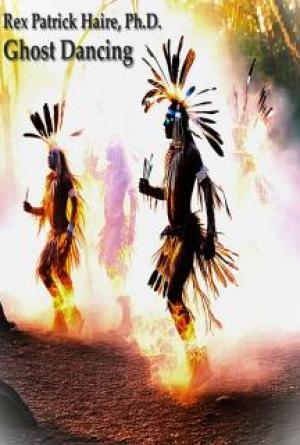Secrets of the Hand Lines
Contents:
The Revealing Hand …………………………………………………….…………….....3 The Hand Shape…………………………………………………………………………6 Ø The Finger Tips……………………………………….…………….10 Ø The Nails ..…………………………………………………………..12 Ø The Fingers .………………………………………………………...14 Ø The Hand Mountains……………………………………………….22 Ø The Hand Lines……………………………………………………..31 Ø The Line of Mind…………………………………………………...32 Ø The Life Line………………………………………………………..37 Ø The Luck Line or Destiny Line……………………………………39 Ø The Sun Line or Success Line……………………………………...42 Ø The Heart Line……………………………………………………...44 Ø The Health Line…………………………………………………….45 Ø The Line of Marriage and Sexuality………………………………47 Ø The Line of Planet Mars…………………………………………...50 Ø The Secondary Lines……………………………………………….51 Ø The Wrinkles...……………………………………………………...53
“The Revealing Hand”
The Etymology, of which we must never leave aside, shows us that the Chirology science deals with uncovering existing interrelations between hand and character.
Chiromancy, the most common term, comes from the Greek word Kheirmain and from the world of prediction. It is the art of reading the lines of the palm. This was practiced by the Caldeans, giving it a godly meaning: ”God placed the signs in people’s palms so that they can know their work.”
The Lines of the hand have been studied in all countries, in Egypt, Persia, India, Rome, China etc.
Chiromancy evolved in Greece: the philosopher Anaxagoras taught this science, and Aristotle, Pline, Paracelse, Emperor Augustus… and many others took it into account.
We can read in Iov’s book the followings:
“On each man He places His seal, so that all men will acknowledge His power.”
However, like with all other forms of pagan predictions, the Christian Church discredited chiromancy practice.
Nevertheless, during the Middle Age chiromancy went through a period of prosperity, despite the Church’s opposition.
The observer’s spirit is astonished by the uniqueness of each hand. It is well known of the importance of digital fingerprints, through which every individual becomes unique. As opposed to any picture, or body measurement, they allow a better identification of the individual.
The Science that includes var ious techniques o f body measure ment “anthropometry” uses, measurements, photographs and digital fingerprints.
The finger’s center contains countless nervous fibers and the hand’s sensibilit y enriches the existing relations between man, nature and his like.
Each portion of the brain is in direct contact with the hands nerves and, in particular, with those located in the center of the fingers.
In the brain, the senses felt by the hands take up more space than all the others.
Studying the fetus has shown that in the moment of hand formation, the definitive lines of the palm also take shape. If we suffer any kind of burn damage to the palms, its lines will heal very fast, keeping their initial shape intact.
In literature, but also in common language, the hand holds up an important place. The biggest love proof we can give someone is to “ask someone’s hand in marriage” Frederic Dard, priest of Saint Antonio, makes this eulogy:
“All the miracles and all the experiences are the work of our hands. The hand helps us to express ourselves, but it also condemns us.
It protects us and denounces us.
It takes part in our love adventures.
It demands and it begs.
It blesses.
But, above all else: it writes.”
It is the idea of a writer passionate and sensitive of his work.
Even symbolism gives the hand an important place in expressions such as“the hand of justice” or”the hand of Fatma”
We will however come back to a more practical realm and we’ll study the hand under the following aspects:
- The general shape;
- The fingers;
- The humidity and harshness of skin;
- The hand’s temperature;
- The touching sensation (solidity or softness);
- The fingernails;
- The palm lines;
- The mountains;
- The hones of the joints etc.
Before any examination, it will be established if the person is right-handed or lefthanded.
In case of a right-handed person, the right hand will reveal him as he is la that moment (Figure 1).
The left hand indicates natural possibilities at birth, possibilities that will be more or less put to good use in the future (Figure 2).

 Figure 1
Figure 1
 Figure 2
Figure 2
In the case of any individual there can be done certain measurements regarding the correct or incorrect usage of his/her natural possibilities and abilities, comparing the inborn trends with those gained.
Thus, we can caution him/her regarding the inherent risks to which he/her can be exposed to. The important differences, not caused by accidents (burns, bruises, skin diseases…), may reveal an unsolved inner conflict.
In this book we will approach only the essential and practical aspects of Chiromancy.
The Hand Shape
First we need to observe is the general shape of the hand or know the person’s character. Much like how a horse’s leg can give information to a connoisseur, the shape of a hand is a very interesting indicator.
The Size
The observer is first of all amazed by the size of the hands. If a short person possesses big hands, it means that he/she is especially interested in details. He/She better notices small details rather than the general characteristics. If however, a tall person has small hands, it means that he/she neglects details in favor of a larger outlook of things. He/She quickly judges on first impressions.
The Palm ’s Width
It must be taken into consideration. It is measured based on its length. It is said that a palm is broad (Figure 3) when its width is bigger than its length. And narrow (Figure 4), when its length is bigger than its width.
 Figure 3
Figure 3
The Broad Palm
 Figure 4
Figure 4
Reveals a kind person, open towards other people, something psychologists call extroversion. This person loves companionship, hides from loneliness and favors a diverse work ethic.
The Narrow Palm
Sign of self doubt, of introversion. The subject has difficulties interacting and favors working alone. He/She has an independent character. Sometimes the subject tends to be selfish .
Usually, there are seven types of hands.
- The elementary hand;
- The conic hand;
- The square hand;
- The pointed hand;
- The hand in the shape of a spade;
- The knotty hand;
- The mixed hand.
The Elementary Hand (Figure 5)
It is very short and thick and the fingers are much sorter than the palm. This type of hand reveals strength, roughness, but not necessarily violence. Nevertheless, it is commonly found on brutal individuals, guided by primary instincts, such as food, drink and sex. This human type is rarely open to examination, and his sensibility is limited. Fortunately, this type has become extremely rare due to human civilization.
 Figure 5
Figure 5
The Conic Hand (Figure 6)
It is also, called the artistic hand. It gets thinner starting from the base, towards the top. The fingers are long, gracious. It is often found in the Orient. It leaves the impression of refinement, softness and sensuality. It indicates sensibility, artistic taste for all disciplines. There is however the risk of shallowness, even insolence, if the line of the mind and the firmness of the hand’s flesh won’t show that the artistic talents will not remain in their latent form, instead they will be expanded through labor and volition.
 Figure 6
Figure 6
The Square Hand (Figure 7)
It is also called the realistic hand, as apposed to the conic hand. In could fit into a square or a square like rectangular. The base of the fingers, like the base of the joint, makes a straight line. The hand’s sides are rectilinear and even the fingers take the shape of a rectangular, the thumb being generally long and on the outside. The square hand is the sign of a practical spirit, organized, generally honest, but lacking imagination. We can trust the work ethic of people with this type of hands, but we could also have some regrets due to their materialism and their excess of reasoning as opposed to their feelings and sensibilities.
 Figure 7
Figure 7
The Pointed Hand (Figure 8)
It is long and narrow, the fingers are thin, and the fingernails form a very long curve. It is the hand of the emotive, intuitive, sentimental types of people. We will differentiate it from the conic hand, due to it being more sensual and refined.
 Figure 8
Figure 8
The Hand in the Shape of a Spade (Figure 9)
The finger tips of these hands have the shape of a spade/shovel, they are wide and flat. The palm has an irregular shape; if it is larger at the base of the fingers rather than the joint, the subject is less impulsive. If not, he/she is dominated by anger. The hand in the shape of a spade is the sign of energy, of courage, of volition. It is the hand of the conquerors, of the builders. There is however the risk of tyranny.
 Figure 9
Figure 9
The Knotty Hand (Figure 10)
Sometimes it is called the philosopher ’s hand; it is bonnie, long, with knotty joints. The general shape is irregular. It is the hand of thinkers or intellectuals: philosophers, mathematicians, notorious monks. It is said that all lettered monks have this type of hand.

Figure 10 The Mixed Hand (Figure 11)
This type pieces together the characteristics of multiple types of hands previously
examined. A square hand may have fingernails in the shape of a spade. A wide palm may have long and thin fingers…
 Figure 11
Figure 11
Even the fingers can have different types. In order to interpret these types, we must refer to each hand type. In the case of these subjects there is a sign to various resources, but also contradictions and versatility…
The variety of characteristics may be luxuriant if the signs of thought and volition, found on the palm’s lines, helps us to uncover these two positive aspects of the character.
We will gradually study the following:
· The fingertips;
· The fingernails;
· The thumb;
· The other fingers.
The Finger Tips
Regarding the fingertips, there are three specific shapes.
The Conic Tip (Figure 12)
It thins up towards the top, progressively, without any knurls. The possessor of such fingers enjoys a world of ideas, of actions. He/She loves comfort and pleasure. They have a sense of beauty and, if all of their fingers have this shape then we are dealing with an artist. This person is endowed with intuition, a great affinity for taste and a trend of not complying with any taboos or other conventions. In the noble sense of the word, he/she is an amateur, but his/her work is more intellectual than physical.
Sometimes their sense of casualness or the lack of volition can be a bit problematic otherwise this person is generally a wizard.
 Figure 12
Figure 12
The Square Tip (Figure 13)
Its shape is defines by its own name. It is the sign discipline at work and in personal life. We are standing in the presence of a rational personality, a rule abider, both socially and religiously. His originality is almost non-existent, much like his adventurous nature. Nevertheless, we can count on their constancy, perseverance and common sense. This subject’s main concern is safety, for which he/she must put up with constant monotonous discipline. The possible risk however is stubbornness.

The Flat Tip (Figure 14)
Resembles the square tip, however, it is wider at the top. We’re in the presence of a dynamic subject, sometimes nervous, who can rarely remain inactive, even though the world of ideas is less interesting to him/her, rather than the physical one. He/She loves trips, fresh air, often even mechanics.
 Figure 14
Figure 14
The Mixed Tips (Figure 15)
One hand may possess all three types of fingers. It is a fairly common phenomenon; it is the sign of characteristic variety, of polyvalent personalities. Such subjects know how to adapt to their surroundings they are endowed with curiosity however they run the risk of not analyzing problems in depth. They are very cooperative and good connoisseurs of“public relations”.
 Figure 15
Figure 15
The Fingernails
Doctors often examine patient ’s fingernails. Some of them claim that at a fingernail level can be found congenital illnesses (heart, lungs, nerves…).
There are five types of fingernails:
The Long Fingernails (Figure 16 and 17)
This type, reveals a lung disease especially if they are vertically knurled. In case they are less long, the neck may become slightly more sensitive. If the
nails have a shade of blue, then the risk of disease occurrence is higher.

 Figure 16 (Very Long) Figure 17 (Long)
Figure 16 (Very Long) Figure 17 (Long)
The Short Fingernails (Figure 18)
Reveal a heart condition. The less visible lunule increases the risk. A short, flat, slightly deepened at the base fingernail reveals a problematic nervous system. If the nail shows a horizontal deepening, then the situation is more severe. The place where this deepening is located helps us to uncover the date of the disease, the fingernail being able to fully grow in nine months. If the deepening is at the base, then the disease is recent; around the middle, then the disease has four or five months; at the top, then eight or nine months.
 Figure 18
Figure 18
The Long Narrow Fingernails (Figure 19)
They reveal a fragile spine, and if they are curved, they show a spine deflection.
 The Flat Fingernails (Figure 20)
The Flat Fingernails (Figure 20)
If they are in the shape of a shell with a pointy base, they reveal the risk of paralysis; the risk is higher if a shade of blue or white covers the fingernails.
 Figure 20
Figure 20
White Spots
On the fingernails, these are a sign of general weakness. If these spots are abundant, then the nervous system is affected.
The Fingernails’ Lunule
It reveals the individual’s vigor and a good blood stream. If they are too wide, there is the risk of hypertension. If they are too narrow, there is the risk of hypotension; in case of profound weakness, first the lunule will become blue, then the entire fingernail.
The Fingers
Generally, fingers differ in thickness, length and shape. Often, a finger is dominant, the others tilt towards it or so we think. The thumb is always examined separately, independently than the others which, usually, have a name (Figure 21): the forefinger is the finger of Jupiter, the middle finger is the finger of Saturn; the ring finger is the finger of the Sun or Apollo. The small finger is the finger of Mercury. We will observe the phalanxes, starting with the top of the finger (the first phalanx).
The Finger of Jupiter
If it is long, it’s the sign of authority, of affinity to power, of pride. If it is short, it’s the symbol of ambition. Intuition, as the sign of conic fingertips, is increased if the first phalanx is longer than the rest. The length of the second phalanx underlines the will of action. If the third phalanx is long, this represents taste for power. If, on the other hand, it is short, it’s the sign of modesty.
 Figure 21
Figure 21
The Finger of Saturn
It reveals information about the subject ’s way of thinking. If it is long, the spirit towers over the material. The first long phalanx is the sign of lucidity, of sincerity; if it is short, it’s the sign of shallowness, of flippancy. If it is thin, it means cruelty. The second phalanx provides information regarding the scientific aspect, unless it is long. If it is short, it symbolizes naivety.
The Finger of the Sun or Apollo
It provides information about social life and artistic ability. The first long phalanx provides the tendency of gaining small glory/fame; a short one is the sign of simplicity. The second long phalanx reveals a sign for creative talents in the art world. If it is short, then any artistic capabilities are non-existent. The third long phalanx, indicate a sign of idealism, of even utopia. If it short, it mean realism.
15


 Figure 21
Figure 21
The Finger of Mercury
If it is long it reveals great intellectual possibilities, an oratorical talent. If it is short, it indicates some difficulties regarding oral expression. If it is twisted along side an uneven line of mind, it is the sign of some psychological problems.
Generally, the fingers are attached to different levels of the palm; the skin clearly underlines the joint. Often, the small finger is attached lower.
Attachment at different levels (Figure 22)
This is the general case, which indicates disequilibrium between different aspects of the personality.
Attachment at the same level (Figure 23)
It is rare and denotes common sense, equilibrium, a good integration in the social life.

 Figure 22 Figure 23
Figure 22 Figure 23
It is worth mentioning, for amateur astrologers, that every phalanx of every finger accounts for one of the twelve zodiac signs (Figure 24), and the mountains at the base of each finger holds the names of the fingers (Figure 21).

Figure 24
The Finger of Jupiter (Forefinger) First phalanx: Ares
Second phalanx: Taurus
Third phalanx: Gemini
The Mountain of Jupiter.
The Finger of Saturn (Middle Finger) First phalanx: Capricorn
Second phalanx: Aquarius
Third phalanx: Pisces
The Mountain of Saturn.
The Finger of the Sun or Apollo (Ring Finger) First phalanx: Cancer
Second phalanx: Lion
Third phalanx: Virgo
The Mountain of the Sun.
The Finger of Mercury (The Small Finger) First phalanx: Libra
Second phalanx: Scorpio
Third phalanx: Sagittarius
The Mountain of Mercury.
We will mention for amateurs of acupuncture that Jupiter’s finger corresponds with the large intestine’s meridian.
The finger of Saturn with the blood stream and sexual organs’ meridian.
The finger of the Sun or Apollo with the meridian of digestion, respiration and generation (triple source of warmth).
The Finger of Mercury with the heart’s meridian.
The Thumb
One of man’s characteristics in the animal reign is the fact that the thumb is opposite to the rest of the fingers. This means, man can touch the tips oh the other four fingers. In acupuncture, the lung’s meridian crosses through the thumb.
The place of the thumb gives us information about the subject’s social skills. If it is close to the joint, this means the subject is prone to independence and freedom. If it is upper, closer to the forefinger, it’s a sign of selfishness and acceptance of some ideas already given.
The length of the thumb is also important. If it is long, it means the subject has a strong personality (Figure 25).
 Figure 25
Figure 25
If it is short (Figure 26), it reveals a weak personality, the subject being devoid of any authority.
 Figure 26
Figure 26
If the thumb is rigid (Figure 27), meaning straight, it is the sign of firmness (but also a lack of diplomacy), of loyalty or fidelity.
If the thumb is flexible or curved (Figure 28), it is the sign that the person is pliable towards other people’s personality and sometimes it is the sign of an outrageous impulsiveness.
 Figure 28
Figure 28
The thumb in the shape of a mace (Figure 29) thick at the top, will indicate brutality, stubbornness, anger…If the thumb is short and in the shape of a mace this aspects are further increased.
 Figure 29
Figure 29
The thumb with the soft middle (Figure 30) is a sign of diplomacy and ability.
It is considered that the thumb has two phalanxes: the first, from the top, represents volition, the second reason. The junction between the thumb and the hand may represent the third phalanx, a sign of love; this one is covert by mount Venus. Pending on how well developed are these phalanxes, we can fully interpret them with the help of the following instructions (Figure 31).
Figure 31 (Volition, Reason, Love)

The Hand Mountains
The Hand Mountains correspond to the seven planets, which give us the traditional characteristics passed on by the Greeks. (Figure 32).
Venus : love, passion, sexuality, the Fine Arts.
Mars: fight, boldness, courage.
Jupiter: volition, ambition.
Saturn: patience, tenacity, self confidence.
The Sun: success, abundance, brightness.
Mercury: intelligence, commercial and scientific abilities.
The Moon: imagination, dreaming, instability.
 Figure 32
Figure 32
These interpretations will be further studied based on the importance of the mountain. There are always discussions regarding the hand’s lines and little talk of its mountains. The ancients gave each one a planet’s name and the Greeks noticed that these planets defined the characters given regularly to people who were influenced by their horoscope. Without the need for astrology, we can therefore rememorize the all so known planetary influences.
Venus
It is the female planet by default; it symbolizes maternity, it gives life. Also, it is the goddess of love, beauty and grace. It is happiness, desire, sensuality.
Venus’ Mountain (Figure 32)
We cannot disregard it. It is situated at the base of the thumb, between the line of life and the finger. If it is clearly developed, meaty and well defined, then it symbolizes the desire to like, the need of constant contact, be it love, friendship or just simple communication with others.
Venus’s Mountain well developed and with a good blood circulation belongs to those able to enjoy a good health and blossoming sensuality. The subjects with this Mountain of Venus are seducers, even if they are not beautiful, their vitality will simply attract sympathy.
If Venus’s Mountain is flat, without any emphasis, pale and poorly irrigated, the subject suffers from contrary natural dispositions. Often enough the subject isn’t attractive sexually or emotionally and has no ability for human interaction. It would be advisable for this subject not to be given a job in“public relations”.
Mars
The Mars Planet is the red planet, icon of blood, war, battles and violent actions. It is also the symbol of fire, lust, passion, anger and movement. This lust which favors the fighting spirit can even be found in human relations: burning love, exaggerated friendship. Taken to the extreme, it means cruelty, intolerance, zealotry, jealous, aggressive spirit…
Mars’ Mountain occupies two positions:


 Figure 32
Figure 32
The First Mountain of Mars (Figure 32)
It is situated under the line of life, close to the thumb; it is considered positive. During the following we’ll study its physical charac












































